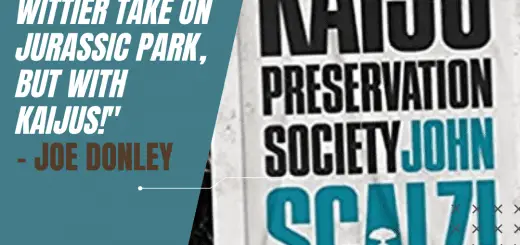Epeolatry Book Review: Dead Letters: Episodes of Epistolary Horror, ed. Jacob Stephen Mohr

Disclosure:
Our reviews may contain affiliate links. If you purchase something through the links in this article we may receive a small commission or referral fee. This happens without any additional cost to you.

Title: Dead Letters: Episodes of Epistolary Horror
Editor: Jacob Stephen Mohr
Genre: Horror/Epistolary
Publisher: Crystal Lake Publishing
Release Date: 1st December, 2023
Synopsis: EVIL LURKS BETWEEN THESE PAGES
A video game walkthrough harbors a sinister secret. A grieving sister’s letters cross the barrier between alive and dead (and alive again). A chain of frightening emails is the only evidence a young woman ever existed. And a series of journals follow a dwindling wagon train marching straight into Hell—or someplace worse.
Haunted podcast transcripts. Blood soaked police reports. Bewildering court findings.
Brace yourself for Dead Letters, an anthology that resurrects the chilling power of epistolary fiction—where ordinary documents become hidden records of our darkest fantasies and bleakest nightmares.
Across 21 all-original tales from talents like Gemma Files, Ai Jiang, Gordon B. White, J.A.W. McCarthy, and Red Lagoe, and curated with precision by Jacob Steven Mohr, Dead Letters: Episodes of Epistolary Horror serves up a prolonged sojourn into the macabre—and promises to haunt your sleepless nights.
I have long enjoyed epistolary/found fiction style stories. These are stories told not through a regular narrative, but instead told by imitating other media. Famous examples include the newspaper articles in Stephen King’s Carrie and the letters in Bram Stoker’s Dracula. I enjoy the opportunity for creativity, the variety in technique, and how each story is also a bit of a riddle for the reader to unravel.
This anthology, Dead Letters: Episodes of Epistolary Horror, from Crystal Lake Publishing continues the literary tradition of found fiction. But Dead Letters bursts with more than just “letters”. Stories constructed of video transcripts, 911 transcripts, diary entries, news articles, emails, notes shoved into walls, academic papers, and even a videogame walkthrough, show the staggering variety of found fiction. I was impressed by the amount of creativity and variety within the anthology and inside each story.
Each tale takes its time building its world and feeding the reader its dark plot. Most of the tales are told not just through one medium, but via multiple types of writing. Readers who are unfamiliar with epistolary fiction may need a little practice to adjust from traditional narrative structure, but even if one story isn’t a perfect fit, there are plenty of others.
When I read found fiction, I prefer stories with an unusual format or a variety of media, a clear story that I can piece together, and engaging plots and characters. This volume did not disappoint me. While some pieces resonated better than others, I recognized the care and work that went into each story.
There’s twenty-one stories, and these are my personal favourites, in order of appearance:
- “Night Nurses of Verdun” by Gregg Stewart
Set in the trenches of WWI and told through the diary entries of a young soldier, this story is dark, romantic, and engaging. Even with my preference for unusual formats, solid characters and a good story are always more important. Unfortunately, my favourite part of this one is a spoiler, so I’ll leave it at that.
2. “No Blood, No Bones” by Zachary Rosenberg
Another story with a simpler format, but easily one of my absolute favourites in the book. This one is told through the diary entries of a Viking in the year 794 CE as he and his crew explore an island and learn a monstrous lesson about trust and enslaving people.
3. “PFC Nathaniel Hart has Died” by G Nicholas Miranda
This one is fantastic. Relayed through a variety of media, scientific reports, letters home, and transcripts, the format is complex, and so is the story. It’s easy to follow and absolutely chilling. The military is conducting an experiment reminiscent of Flatliners on their soldiers to transform them into a new weapon with unexpected results.
4. “Tashlich” by Emily Ruth Verona
Verona offers a tale through confessions written on slips of paper for Rosh Hashanah. Each penned confession is slipped into a hole in the wall for disposing of old razors. There are only five confessions, but Verona masterfully crafted each one to reveal another piece of the story.
5. “Something Cool Behind the Waterfall” by Nat Reiher
Using a video game walkthrough embedded in an email as part of an investigation, this surprising format made for a delightfully horrifying tale. Rachel Pettis, a retired private investigator, has taken up playing a bad fantasy game as a form of therapy. While completing the levels, she resorts to using a walkthrough to finish the game. In the walkthrough, she finds a disturbing secret level that connects to a real police investigation. I appreciated how the writer captured the format of a walkthrough while showing us the character of Rachel in the emails flanking it.
Those are just five of the stories I loved the most, but there are many strong entries. If you enjoy found fiction style narratives, then you can’t pass up Dead Letters.
![]()
/5
- About the Author
- Latest Posts
Melody lives in Ontario, Canada and writes short, dark fiction. She has been published in several anthologies and online publications. In university, she studied Ancient Greek and Roman Studies and often infuses her work with elements of Greek mythology. She also loves reading, embroidery, and martial arts. You can follow her homepage at: https://www.blog.melodyemcintyre.com/
Homepage: https://www.blog.melodyemcintyre.com/MelodyEMcintyre.com
Twitter: @evamarie41.













